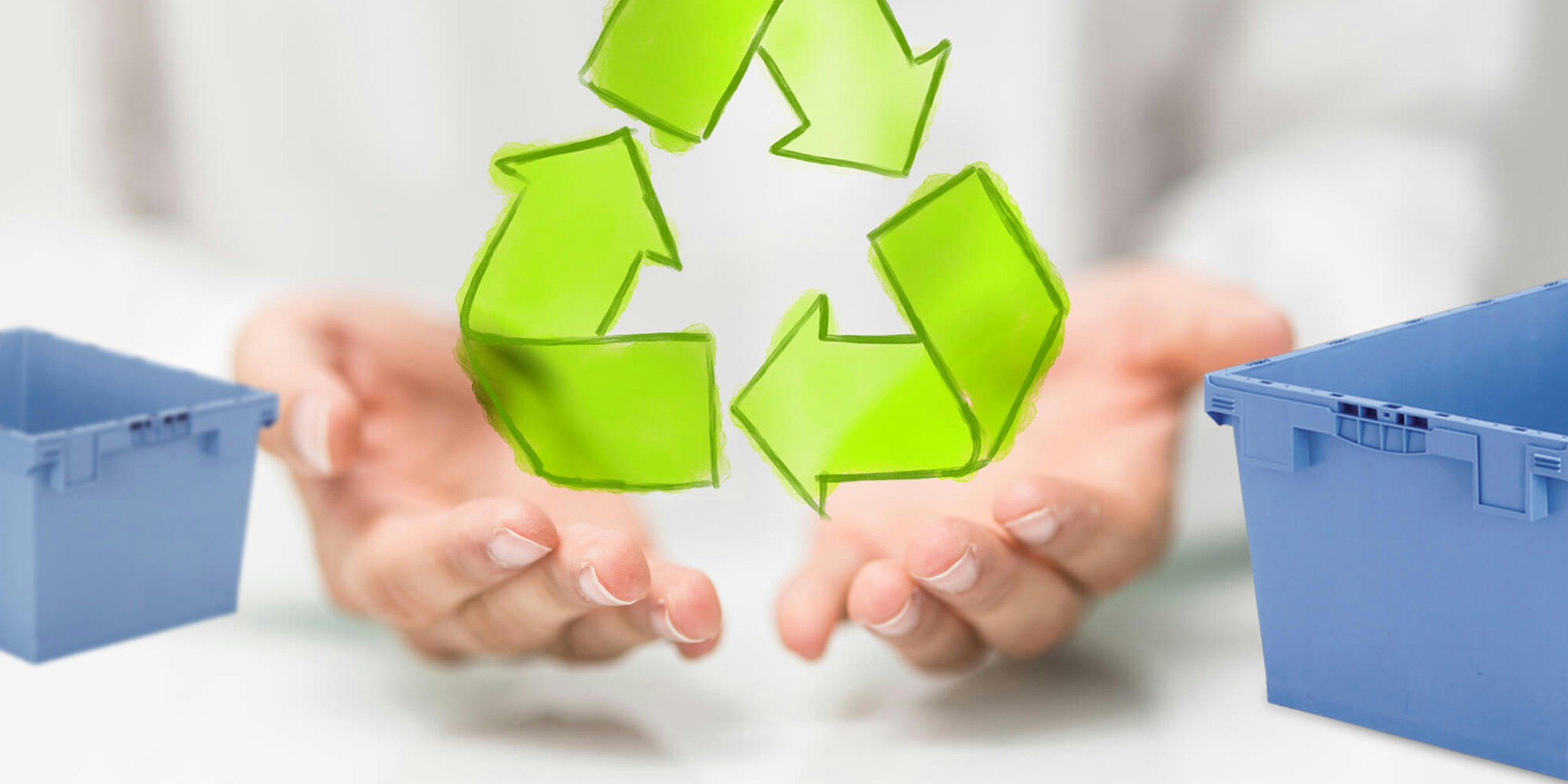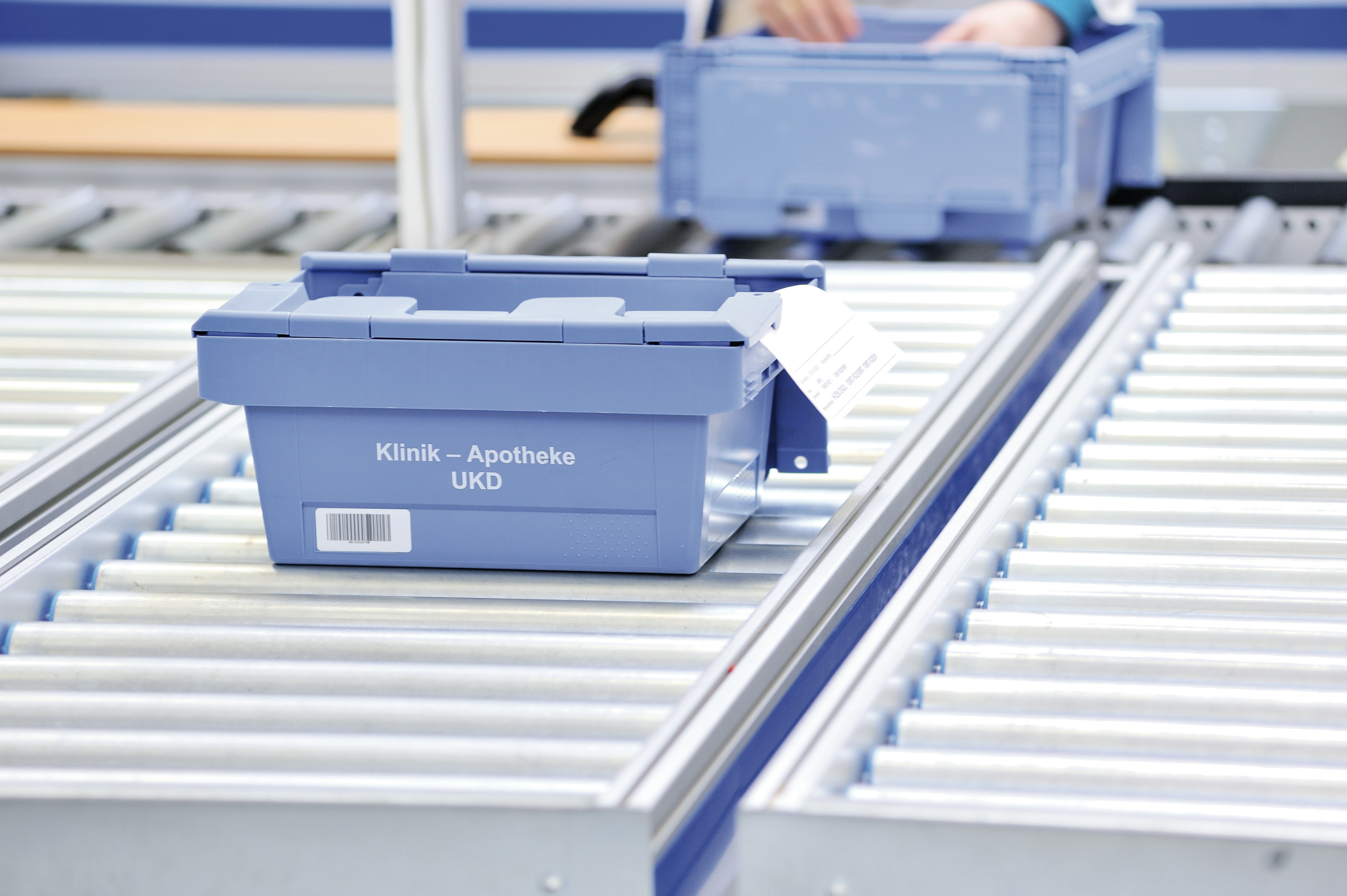Reusable containers contribute to sustainability

Conserve natural resources with reusable containers
Reusable containers contribute significantly to the conservation of natural resources, as their use eliminates the production of disposable packaging. Thanks to their durability, the containers can go through multiple transportation cycles, which drastically reduces the consumption of raw materials such as wood, cardboard and plastic. In addition, reusable containers promote closed recycling cycles and waste avoidance. Used containers are returned, recycled and reused. As less energy and materials are needed to produce new containers, the impact on waste and the environment is minimized. This makes reusable containers the perfect and most environmentally friendly shipping solution.
Environmentally friendly alternatives to cardboard packaging
There are several environmentally friendly packaging and reusable alternatives to cardboard boxes. Reusable plastic containers are made of robust plastic and can be reused many times. They are ideal for the transportation and storage of goods as they are stable, stackable and easy to clean. Metal containers, especially those made of aluminum or stainless steel, are extremely durable and resistant, which makes them ideal for transporting heavy or sensitive goods. Wooden and plywood crates can be recycled or composted at the end of their useful life. Reusable fabric and textile bags made from materials such as cotton or jute are ideal for lighter transportation tasks or daily use. Glass containers are a sustainable choice, especially in the food sector, as they are durable, easy to clean and fully recyclable. There are also compostable containers made from bio-based plastics such as polyactic acid (PLA), which can be biodegraded after use. All alternatives help to reduce waste, conserve resources and minimize environmental impact. The reusable container cycle enables sustainable shipping.
Advantages of reusable cycles
Compared to single-use systems, reusable cycles offer numerous ecological and economic advantages. One of the most significant advantages of reusable containers is the considerable reduction in the CO2 footprint. The use of reusable plastic containers for transporting goods can result in up to 60 percent less CO2 emissions compared to single-use cardboard containers. The savings result from the higher number of usage cycles that reusable containers go through before they have to be recycled. In addition to the environmental benefits, reusable containers also offer economic savings. Long-life reusable MB distribution containers from BITO, which can go through an average of up to 300 transport cycles, reduce the need to manufacture new containers and thus significantly reduce the consumption of resources. In addition, reusable containers are robust and stackable, which minimizes transport damage and increases efficiency in warehousing and logistics. In addition, a closed-loop system leads to cost savings through lower material procurement costs for containers and more efficient use of space. As MB totes are nestable, they save up to 75 percent space during return transportation and empty storage. In the long term, the higher purchase costs of reusable containers are amortized by the savings in the areas of material procurement, transport and disposal costs.
Differences between disposable and reusable containers
Disposable and reusable containers differ fundamentally in terms of their material composition, use and environmental impact. Disposable containers are usually made of cardboard, paperboard or thin plastic and are designed for single use. Due to their short service life, disposable containers and cardboard packaging lead to a considerable amount of waste and higher CO2 emissions. In contrast, reusable containers are made of more robust materials such as thick plastic or metal and can be reused many times, which significantly reduces their ecological footprint. Economically, single-use containers cause higher long-term expenses due to the continuous need for new purchases and disposal costs. Reusable containers, on the other hand, require a higher initial investment but offer significant cost savings due to their durability and repeated use. Their sturdy construction minimizes transport damage and optimizes logistical processes as they can be efficiently stacked and returned to save space. In summary, reusable containers offer a more sustainable and economical solution compared to disposable containers.
| Disposable | Reusable | |
| Material | Cardboard, cardboard, thin plastic | Robust plastic, metal |
| Utilization | Unique | Multiple (up to 300 cycles) |
| Service life | Short | Long (several years) |
| Resource consumption | High (continuous new production) | Low (repeated use) |
| CO2 footprint | High | Low (60 percent lower) |
| Costs | Low acquisition costs, high running costs | Higher acquisition costs, lower running costs |
| Environmental impact | High waste | Low waste, recyclable |
| Stability | Less stable, more transport damage | Robust, less transport damage |
| Logistics | Simple, but requires a lot of space, disposal | Efficient (stackable, nestable, space-saving during return transport) |
Opportunities to participate in reusable systems
Companies have various opportunities to participate in reusable systems and take advantage of their benefits. These include cooperating with pooling providers, implementing their own reusable systems and participating in take-back and recycling systems. Providers of container and pallet pooling solutions, such as CHEP and Tosca, provide standardized reusable containers and pallets that are cleaned after use and reintroduced into the cycle. By using such services, companies can optimize their logistics processes and be more environmentally friendly at the same time. Larger companies, particularly in the automotive and food industries, can introduce their own reusable systems. This includes the purchase of durable reusable containers and the creation of an infrastructure for their return, cleaning and reuse. A well-designed reusable system can improve material flow and reduce operating costs. Responsible and sustainable storage technology companies like BITO offer take-back programs for their reusable containers. Customers can return used containers, which are then cleaned, recycled and used to make new containers. The closed recycling loops help to reduce waste and resource consumption. In Germany, BITO takes back used reusable MB containers, shreds them and uses them to make new containers, which improves resource conservation and minimizes the CO2 footprint. The MB Eco in particular is made from recycled polypropylene and demonstrates how recycled materials can be used effectively to create high-quality, sustainable products. There are numerous ways to implement reusable and deposit systems with high-quality plastic containers made from recycled material. Deposit systems encourage the return and reuse of containers and ensure that they do not end up in the bin.

